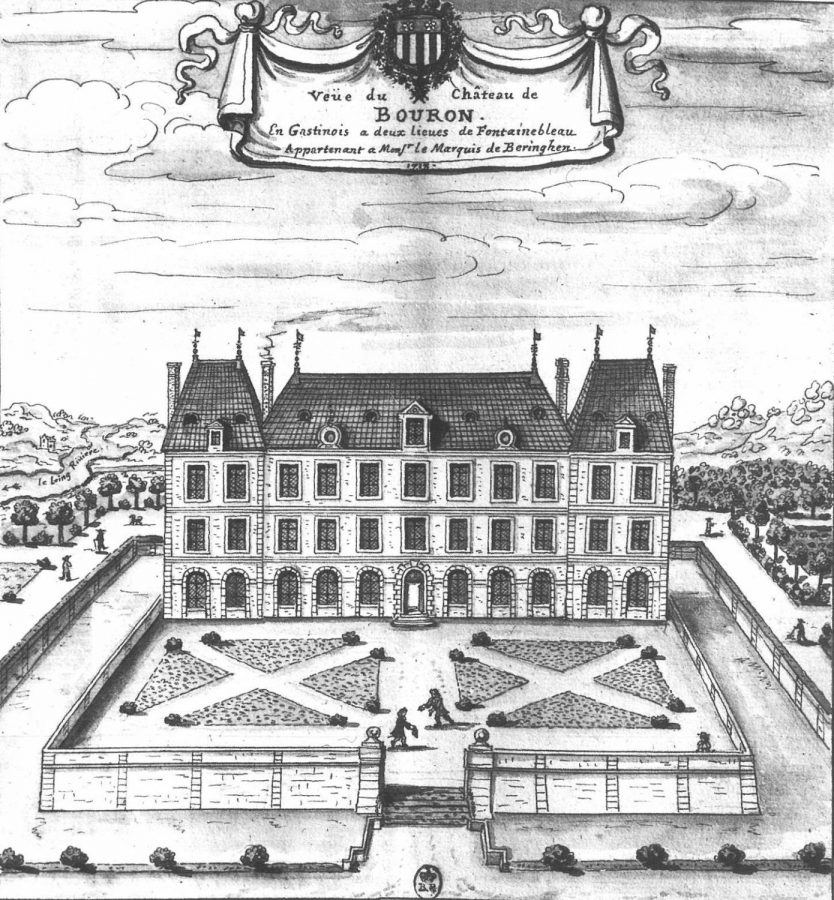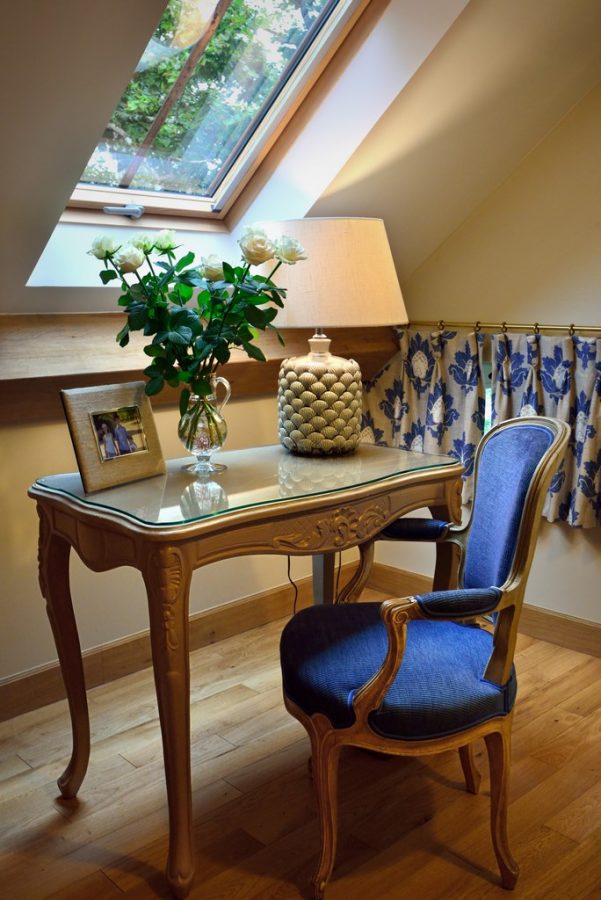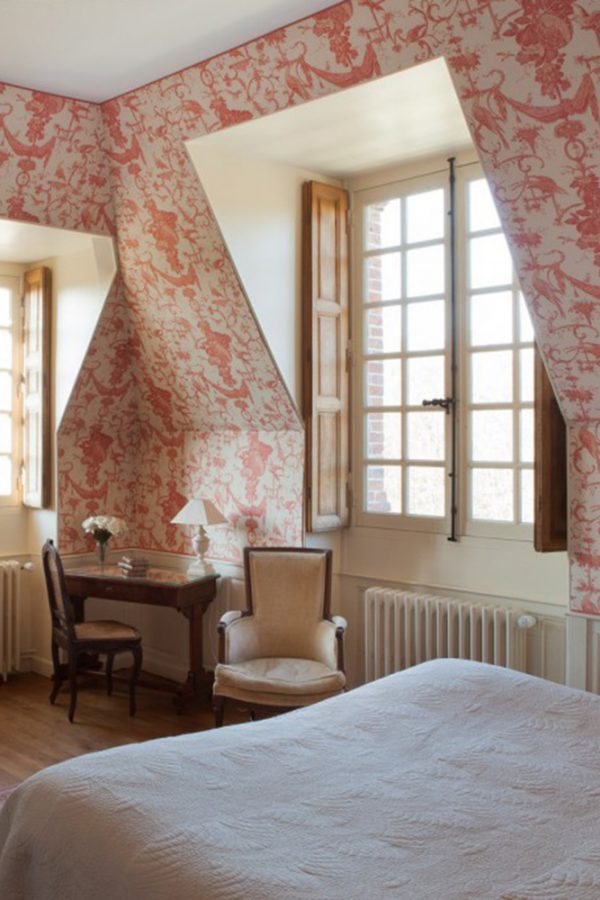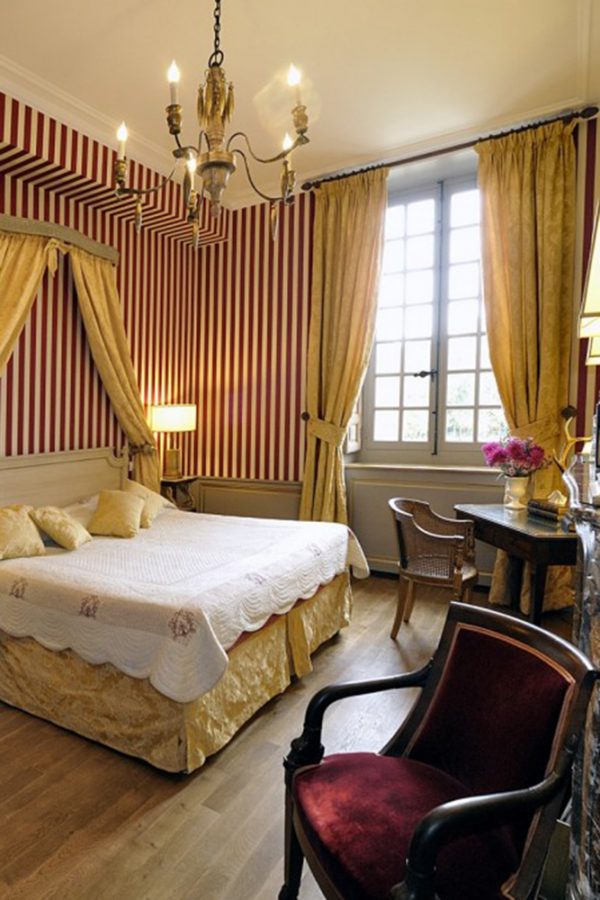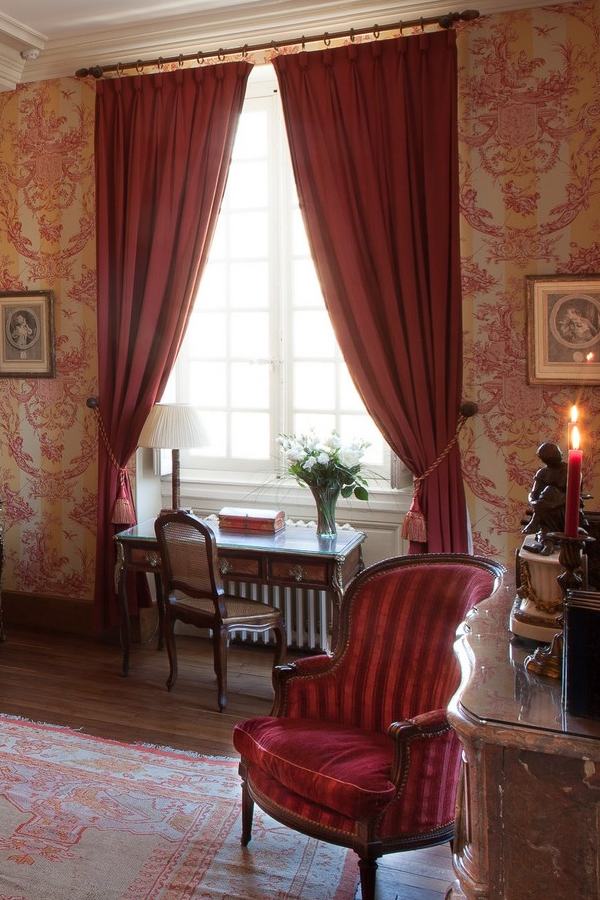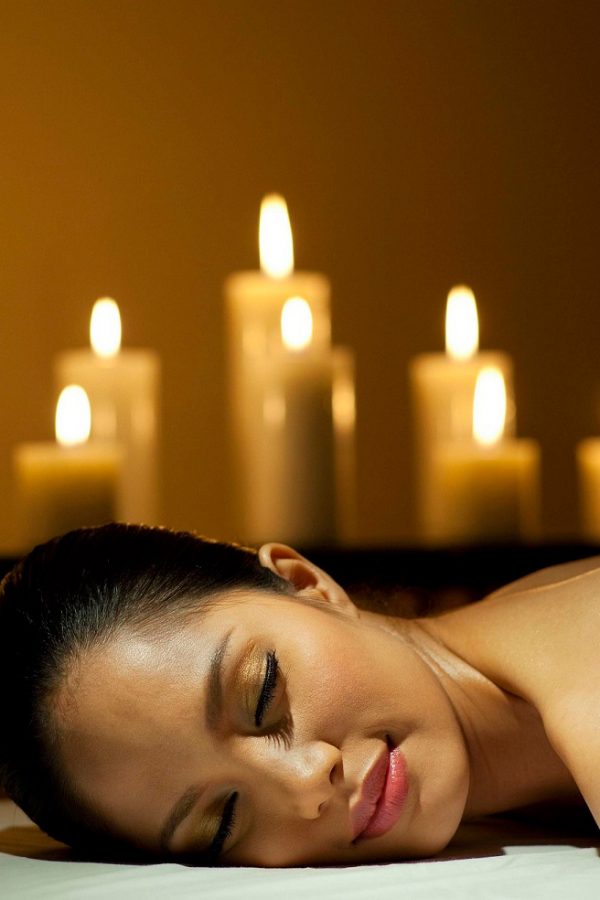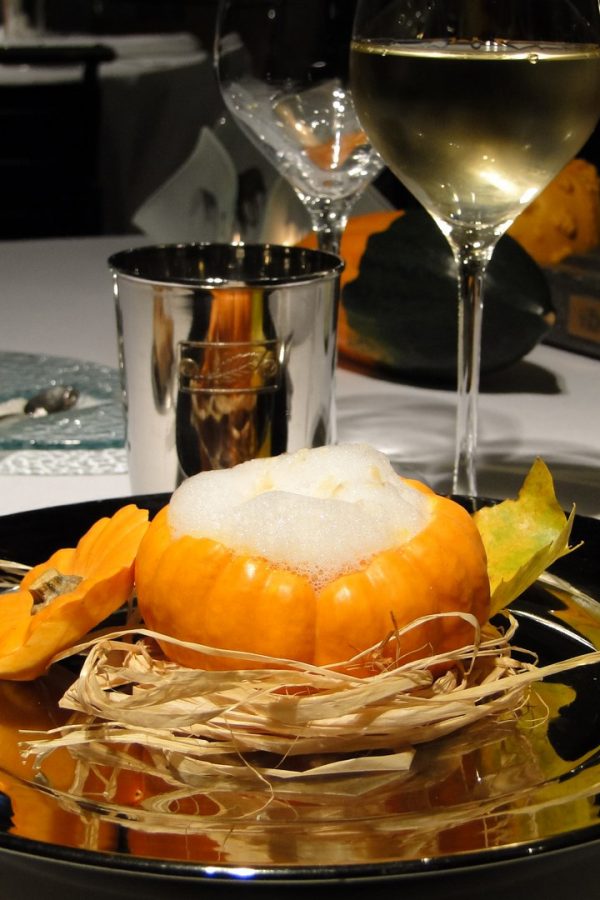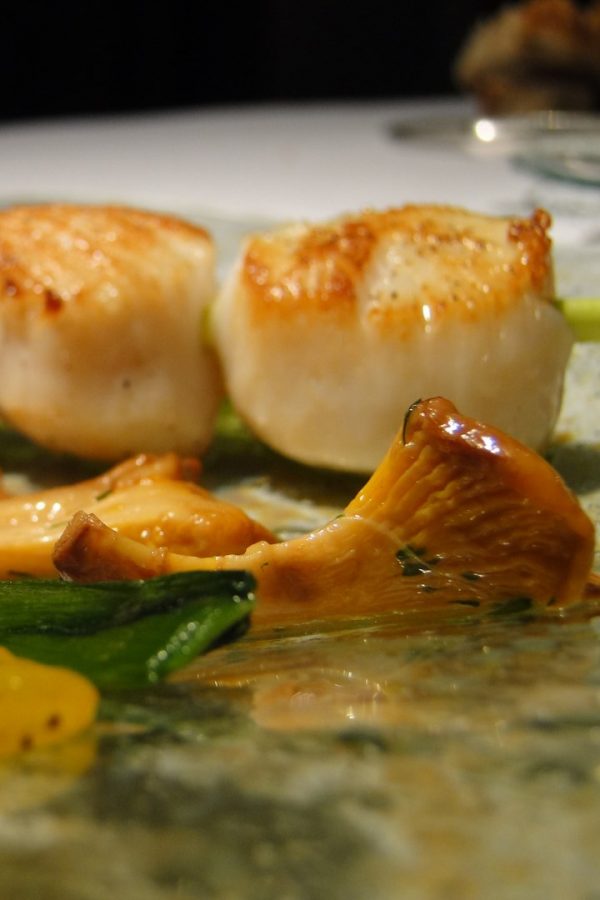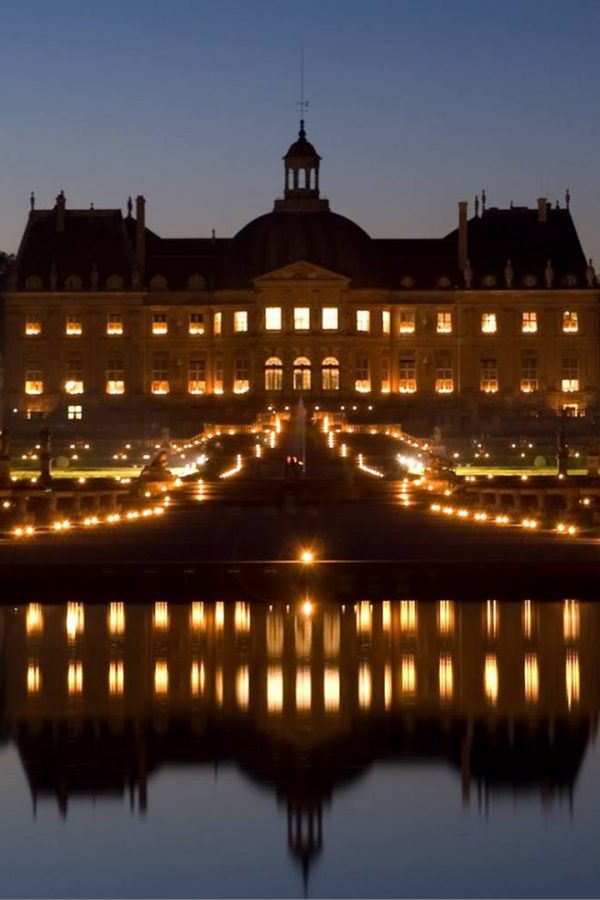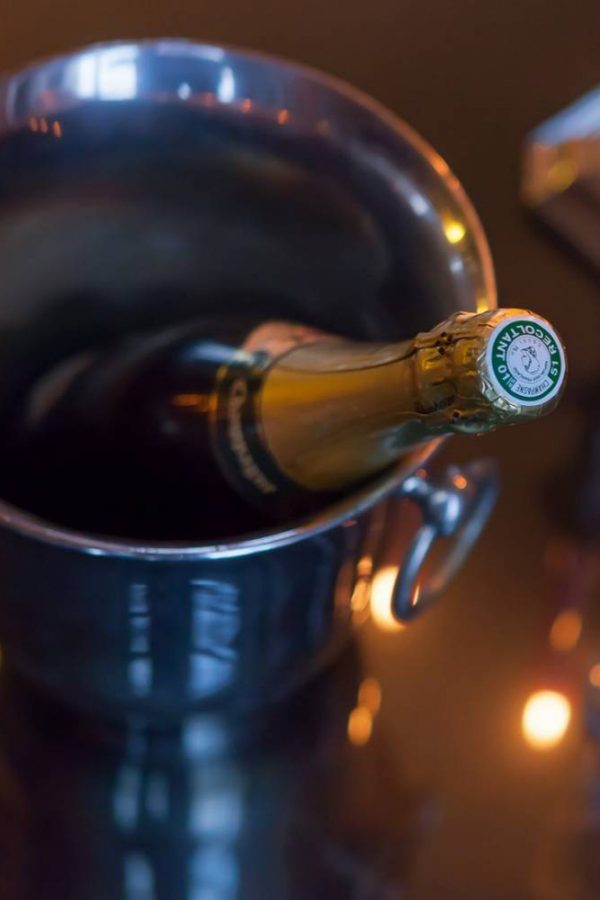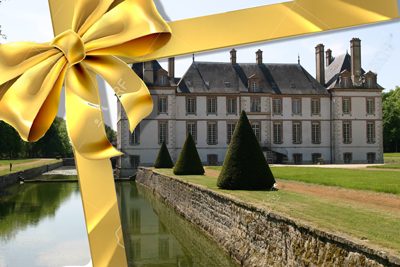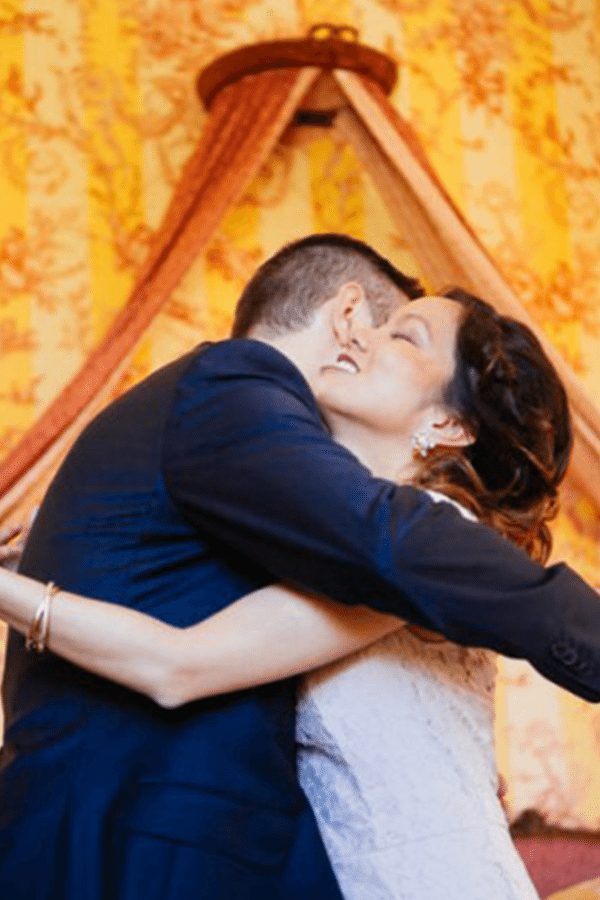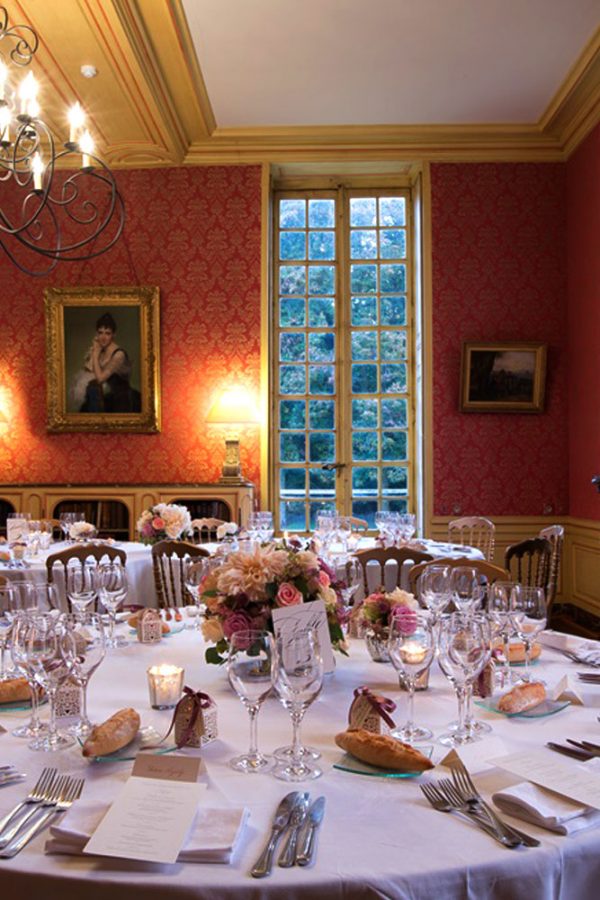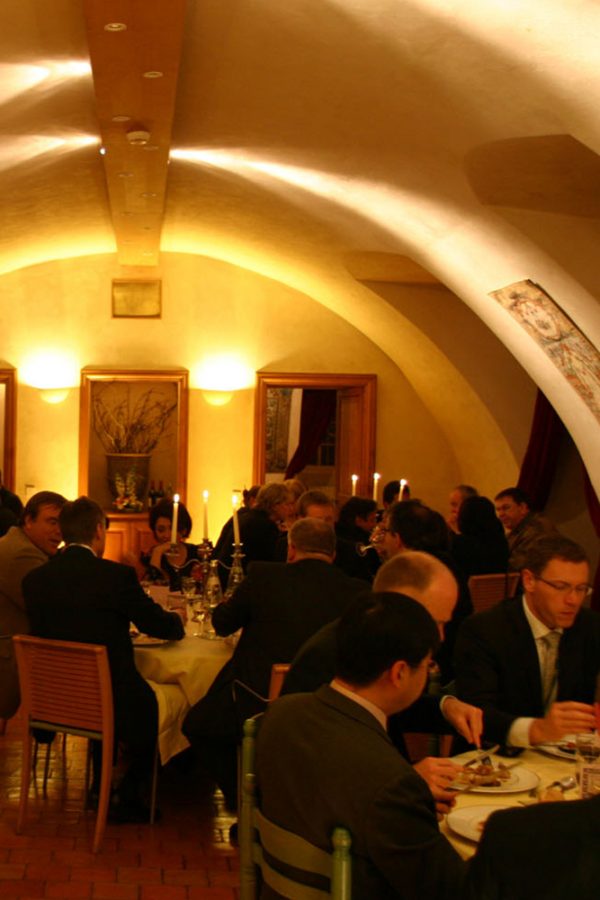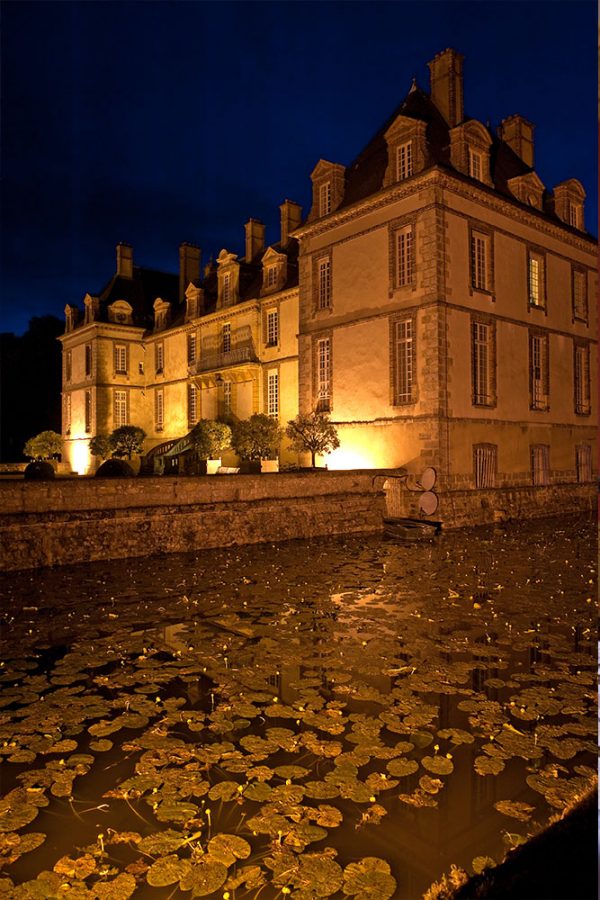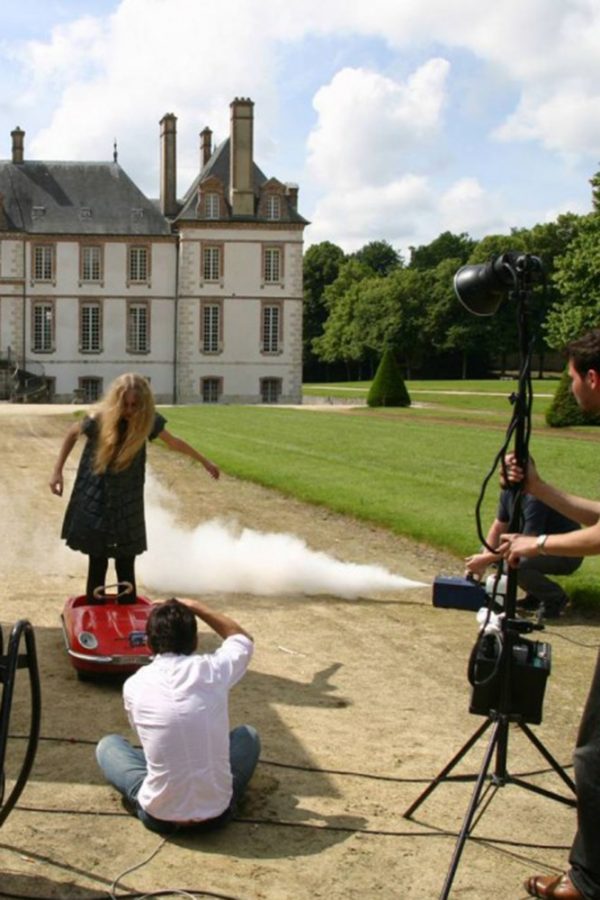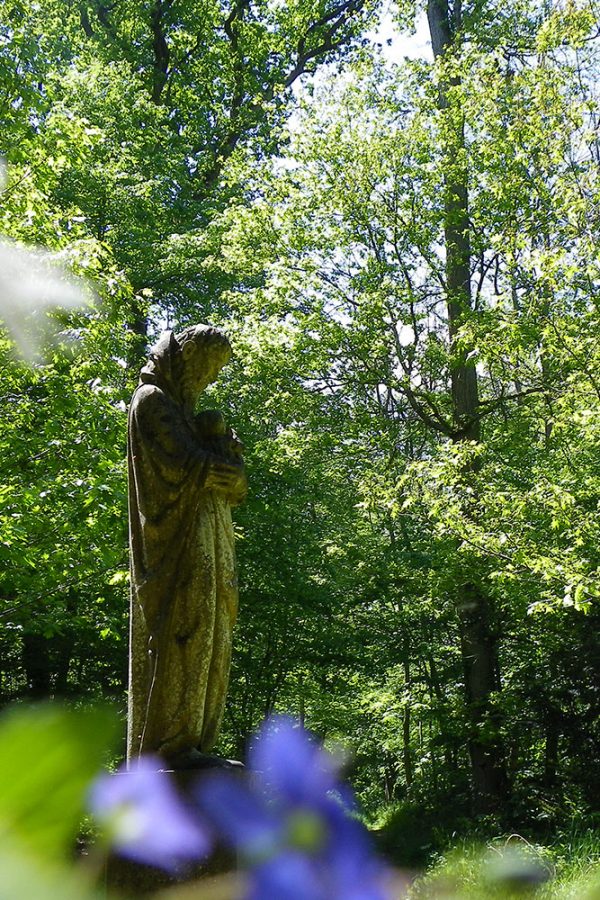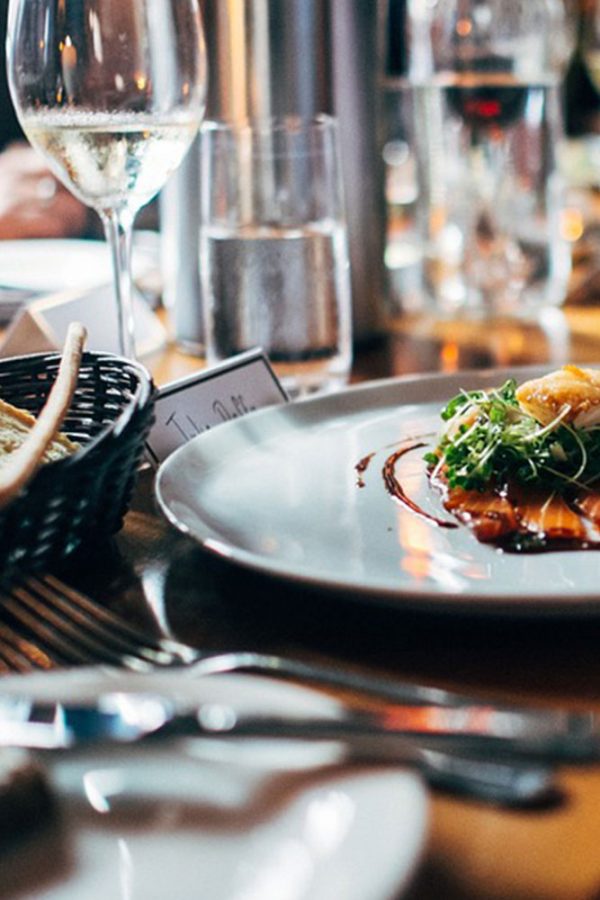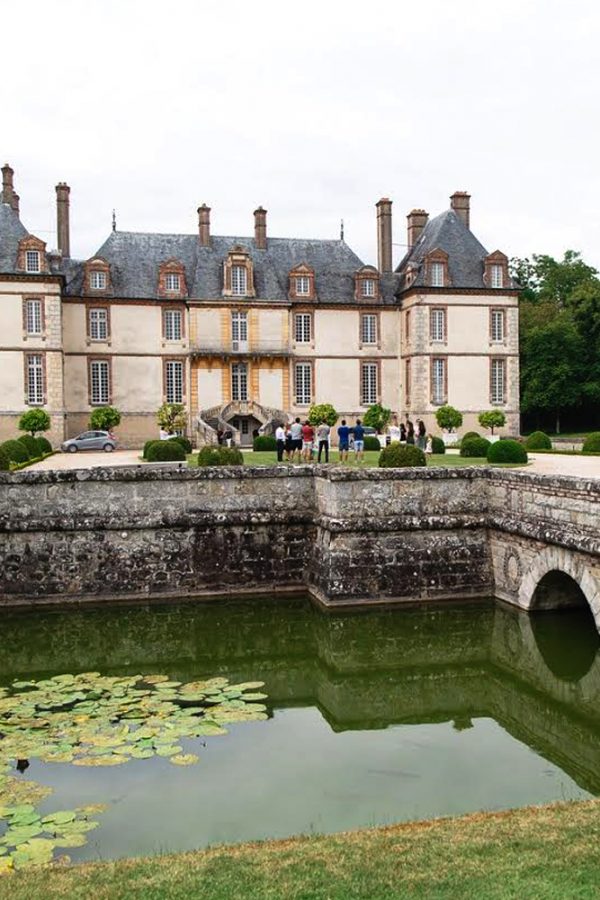History of the Château de Bourron
The setting of the Château de Bourron, located in the village of Bourron-Marlotte in Seine-et-Marne, has long been extremely favorable to human settlement. Between the forest of Fontainebleau in the north, the Loing valley in the south and nearby, the ever flowing Saint-Sévère spring.
Therefore, it has always been occupied since the Neolithic times – around 5000 years B.C.- the evidence of this being the beautiful ribboned vase displayed at the Museum of National Antiquities in Saint-Germain-en-Laye.
It was then invaded by the Celts, who gave the name Bourron to the village, then spelt, ‘Bouvron’ or ‘Borri’, which is derrived from ‘Bovron’, the water divinity.
During the Gallic period, the knowledge of the cadaster enabled an expansive farming exploitation, which extended far beyond today’s estate. Its centre, certified by archeological remains, was situated less than fifty meters from the castle and was still occupied in the Middle-Ages.
The Lords of Bourron and the first castle
Starting in 1150, official papers and settlements made on religious congregations of the area brought some information about the first lords of Bourron. These were well established around the Loing valley, from Jacqueville in the west to Saint-Mammès near the Seine, where they were able to serve their king during the time when the kingdom of France and the Île-de-France were one.
The “trois fusées en face” crown, which was probably owned since the very beginning of this seigniorial castle, signifies the nobility and institution of the justice of those within the castle, even if it is not described before 1367 during a royal inspection where Bourron was then a fortress “closed with walls and encircled with water moats”..
One of the first lords was Robert de Borron who collected Celtic traditional oral stories and the Arthurian cycle of the Round Table, arranging them and going back to their Christian origins with the trilogy of Joseph of Arimathia, Merlin and Perceval. It was through these collections he developed a method of writing and in the late 13th century he wrote the first French prose novel, the Novel of the Holy Grail, which caused quite a stir at that time.
For unknown reasons, around 1380, the Bourron estate belonged to the Villiers de l’Isle-Adam family for about sixty years. During this time, in 1402, a member of the family, Jehan, left “the confession and people census of his castle of Bourron and its belongings” before taking an oath with the King of France. This is the first of a long series of descriptions about the medieval domain, which, as far as we can say, met the Gaelic-Roman cadastral survey.
From 1145 to about 1465, the estate belonged to Denis de Chailly, from the great family of the Viscount of Melun, the most important of all the commanders from the Brie. During this time she joined Joan of Arc to re-conquer France from the British. It then belonged to Charles de Melun, who was unable to enjoy it due to his beheading in 1368 by order from Louis XI for helping a State prisoner to escape.
His son Antoine died in 1487, leaving so many debts that his viscount and seigneurie of Bourron were seized and sold by auction.
The eventual winners of the auction were a squire, Regnault du Chesnay and a knight, who was also an accomplished falconer of France, Olivier de Sallard. On the 15th of July 1550, these two men became the owners of the viscount of Melun and the seigneurie of Burron, which they dived up amongst themselves.
The “brick and rock” Sallards’ castle
In 1502, Olivier de Sallard became the sole owner of Bourron. With a family native of Brabant and specialized in falcon taming for the Dukes of Bourgogne, Olivier Salaert de Doncker was a contemporary of Louis XI, King of France. Soon after this, Louis XI hired Olivier de Sallard as a falconer and he rapidly strengthened his position as Great Falconer of France. What’s more, Charles 8th granted him with his naturalisation letters, thus enabling him to be the owner of and to have found a line in Bourron for two and a half centuries.
Fifty years after the purchase of Bourron, the Sallard family had significant financial problems, as two of their children, Jehan and François, were co-lords of Bourron. By 1562, they were unmarried and they even made a settlement inter vivos for their possessions.
Jehan de Sallard soon died, without an heir.
His brother, François, married Diane Clausse, daughter of Henri the 2nd‘s Finances State secretary, between 1562 and 1574, which brought him a comfortable dowry and enabled him to purchase large areas of land to build up the domain of Bourron and, most probably, to replace the old medieval fortress by the current castle in the late 16th century.
The estate during the classical times
During the 17th century, it appears that life was quite peaceful in the new castle of Bourron, the Sallard family often staying there, whilst the father and the elder son were fighting as officers in one of the King’s French Guards regiment. Armand-Nicolas de Sallard must have performed amazing military feats as in 1680 Louis 14th made a marquisate of the estate of Bourron.
When the last Sallard died in 1709 at the battle of Oudenarde, the estate and its title were given to their mother’s second husband, Frédéric de Beringhen, himself an officer, who belonged to the youngest branch of a family of Dutch protestants, whose eldest children were First Equerries, laden with honours and esteem, from the kings Louis 13th, Louis 14th and Louis 15th.
This relationship explains why, in October 1725, the castle of Bourron was chosen to host the dethroned King of Poland, Stanislas Leczinski, who was unable to be accommodated at the Court in Fontainebleau because of an etiquette problem, as his daughter was getting married with the young Louis 15th. Nonetheless, the new Queen of France came everyday to visit her parents, and even lost a diamond on the grounds.
Louis XV à la chasse au château de Bourron-1725
However, Louis 15th, again due to etiquette, had to give a hunt in order to meet his father-in-law and introduce himself to him “incognito”, as wrote the media at the time, as all the princes of royal blood, the whole Court in their hunt carriages, and finally all his ministers and State secretaries were in attendance! Following these glorious days, Bourron was at peace again, under the leadership of François-Pierre de Varennes, Mlle de Béringhen’s husband, and their son, François-Frédéric, both whom were officers. In fact, documents show that starting in the 18th century, the life of the estate, and indeed the comfortable but simple home of this representative of average nobility, existed with a passion for chemistry, geography and astronomy.
During the French Revolution, in 1794, the ‘sans culottes’ from Nemours came, plundered the castle and destroyed the symbols of the abolished feudal system; the entrance gate with seigneurial arms, the pigeon house with square foundation and the ditches by trying to fill them in. They brought the Marquess of Bourron, then a widow in Paris, who only owed her life to Robespierre’s fall a few months later. The local villager kept her youngest daughter, Adélaïde-Luce, in custody, which was a way to protect her as well as the estate.
The castle had a few more ups and downs, because of Mme de Varenne-Bourron’s son who had already been imprisoned at 18 years of age for debts, stuck to his way of life and thus, in 1806, had to sell the estate to his main creditor, who broke it up and quickly sold the castle and the grounds to Adélaïde-Luce and her husband, the Marquis of Montgon. The Montgons kept trying to build up the old domain again, parcel after parcel, and their successors also carried on with this.
The present days
As a result of legacies, the castle of Bourron was put up for sale a further three times by the Montgons in 1849, then the Brandoix in 1862 and lastly the Piollencs in 1878.
These two last families took an active part in the village’s life as mayors and benefactors. They rebuilt parts of the 11th century church at the time when Bourron and its hamlet, Marlotte, lived an intense artistic life. Hundreds of painters and writers, like Barbizon, stayed there, attracted by the rustic charm of these houses and the close proximity to the forest of Fontainebleau.
In 1878, the domain was purchased by the Montesquiou-Fezensac family, who still live there today. From a family of old nobility from the Gers, they boast among their ancestors the famous d’Artagnan, ministers of Louis 14th, as well as Le Tellier de Louvois and Madame de Montesquiou, house-keeper for the young King of Rome who affectionately called her “Maman Quiou”. For a century, they dedicated themselves to restoring and refurnishing the castle, using their family heirlooms and laying out the grounds again following extensive damage because of the bombings of the last war. Nonetheless, the setting of this castle by the forest of Fontainebleau, this residence has thus kept its harmonious nature.
The Comte and Comtesse Blaise de Montesquiou had no children so they bequeathed their niece, Countess Marie-Laure de La Bédoyère, the property, who gave the heritage to one of her four girls, my wife, Estrella.

